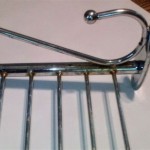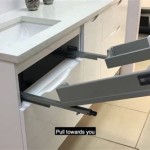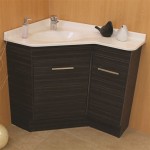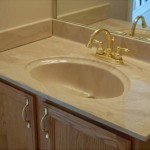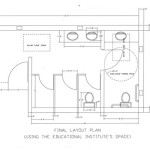Can I Use Sheetrock in a Bathroom? Understanding Moisture Resistance and Alternatives
The question of whether standard sheetrock, also known as drywall or gypsum board, can be installed in a bathroom is a common one for homeowners and contractors alike. The short answer is that using standard sheetrock in areas of a bathroom directly exposed to moisture is generally discouraged, and in some cases, building codes may prohibit it. However, the longer answer is more nuanced and depends on the specific location within the bathroom and the type of sheetrock used.
The primary concern with using standard sheetrock in a bathroom environment stems from its composition. Standard sheetrock is primarily gypsum, a soft sulfate mineral, sandwiched between two layers of paper. While gypsum itself is relatively inert, the paper facing is highly susceptible to moisture damage. When exposed to high humidity or direct water contact, the paper can delaminate, leading to swelling, crumbling, and ultimately, mold growth. This compromises the structural integrity of the wall and creates an unhealthy environment.
Because bathrooms are inherently wet, with regular exposure to steam, splashes, and humidity, careful consideration must be given to the materials used for wall construction. While standard sheetrock may be acceptable in certain parts of a bathroom, such as a powder room with only a sink and toilet, it is generally not appropriate for areas directly surrounding a shower or bathtub.
Understanding Moisture-Resistant Sheetrock Options
Fortunately, manufacturers have developed moisture-resistant sheetrock options specifically designed for use in humid environments like bathrooms. These specialized sheetrock products offer enhanced protection against moisture damage and mold growth, making them a suitable alternative to standard sheetrock in many bathroom applications.
The most common type of moisture-resistant sheetrock is often referred to as "green board" or "water-resistant sheetrock." This type of sheetrock features a green paper facing that is treated with a water-resistant coating. While this coating provides some level of protection against moisture penetration, it is important to understand that green board is not waterproof. It is designed to withstand incidental moisture exposure, such as splashes from a sink or brief periods of high humidity, but it is not intended for direct and prolonged contact with water.
Another type of moisture-resistant sheetrock is "blue board," which is specifically designed as a base for plaster. While it offers some moisture resistance, it is more commonly used in applications where a smooth, durable plaster finish is desired. Blue board is not typically used as a standalone wall surface in bathrooms.
For areas of the bathroom that are subject to direct and frequent water exposure, such as shower and tub surrounds, cement board is generally the preferred choice. Cement board is a rigid, cement-based panel that is highly resistant to water damage and mold growth. It provides a stable and durable substrate for tile, stone, or other waterproof wall coverings. Cement board is specifically designed to withstand the harsh conditions of a shower or tub enclosure and provides a long-lasting and reliable solution.
Proper Installation Techniques for Moisture-Resistant Sheetrock
Even with the use of moisture-resistant sheetrock products, correct installation is crucial to ensuring long-term performance and preventing moisture-related problems. Proper installation techniques include sealing seams and joints with moisture-resistant tape and joint compound, applying a waterproof membrane over the sheetrock in areas directly exposed to water, and ensuring adequate ventilation in the bathroom to minimize humidity levels.
When installing green board or blue board, it is essential to use moisture-resistant joint compound to seal the seams and joints between the panels. Standard joint compound is porous and can absorb moisture, which can lead to cracking and crumbling over time. Moisture-resistant joint compound provides a more durable and watertight seal, preventing water from penetrating behind the sheetrock.
In areas that are subject to direct water exposure, such as shower and tub surrounds, a waterproof membrane should be applied over the sheetrock before installing tile or other wall coverings. This membrane provides an additional layer of protection against water damage and prevents water from seeping into the wall cavity. There are several types of waterproof membranes available, including liquid-applied membranes, sheet membranes, and self-adhesive membranes. The choice of membrane depends on the specific application and the preferences of the installer.
Adequate ventilation is also crucial for minimizing humidity levels in the bathroom. A properly functioning exhaust fan can help to remove moisture-laden air from the bathroom, preventing it from condensing on walls and ceilings. The exhaust fan should be sized appropriately for the size of the bathroom and should be used during and after showers and baths.
Building Codes and Regulations Regarding Sheetrock in Bathrooms
Building codes and regulations often dictate the types of materials that can be used in bathroom construction. These codes are designed to ensure the safety and durability of buildings and to protect occupants from health hazards, such as mold growth. It is important to consult local building codes and regulations before starting any bathroom remodeling project to ensure compliance.
Many building codes require the use of moisture-resistant or waterproof materials in areas of the bathroom that are subject to direct water exposure. This may include shower and tub surrounds, as well as areas around sinks and toilets. The specific requirements vary depending on the jurisdiction, so it is important to check with the local building department for clarification.
In some cases, building codes may require the use of cement board in shower and tub surrounds, while in other cases, moisture-resistant sheetrock may be acceptable if it is properly installed and protected with a waterproof membrane. It is also important to ensure that all electrical outlets and fixtures in the bathroom are properly grounded and protected with ground fault circuit interrupters (GFCIs) to prevent electrical shock.
Failure to comply with building codes and regulations can result in fines, delays, and even the need to redo the work. It is always best to consult with a qualified contractor or building inspector to ensure that the bathroom remodeling project is in compliance with all applicable codes and regulations.
In summary, while standard sheetrock is not generally recommended for use in bathrooms due to its susceptibility to moisture damage, moisture-resistant sheetrock options, such as green board and cement board, are available for use in specific areas of the bathroom. Proper installation techniques, including sealing seams and joints with moisture-resistant materials, applying a waterproof membrane in areas subject to direct water exposure, and ensuring adequate ventilation, are crucial for preventing moisture-related problems. Consulting local building codes and regulations is essential to ensure compliance and to protect the safety and durability of the bathroom.

What Type Of Bathroom Drywall Should I Use

Best Drywall For Bathroom 5 Options To Choose From

Can You Reuse Drywall From Your Bathroom Remodel
What Type Of Drywall Is Used In Bathrooms Quora

6 Bad Ways To Build A Shower What Not Do Diytileguy

What Type Of Drywall Should Be Used In A Bathroom
When Gutting A Bathroom To Replace The Drywall Does Bathtub Have Be Removed And Can It Reused Quora

How To Finish Drywall Where It Meets The Shower Wallboard Trim Tool

Moisture And Mold Resistant Drywall Fine Homebuilding
Drywall And Cement Board For The Downstairs Bathroom Blog Homeandawaywithlisa
Related Posts
